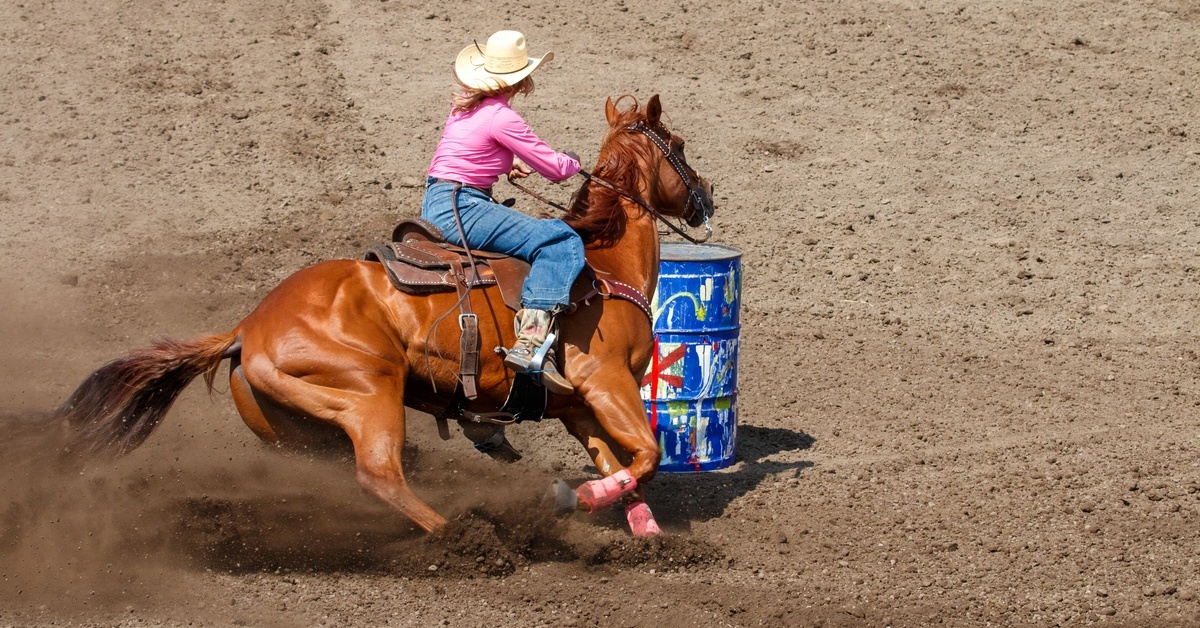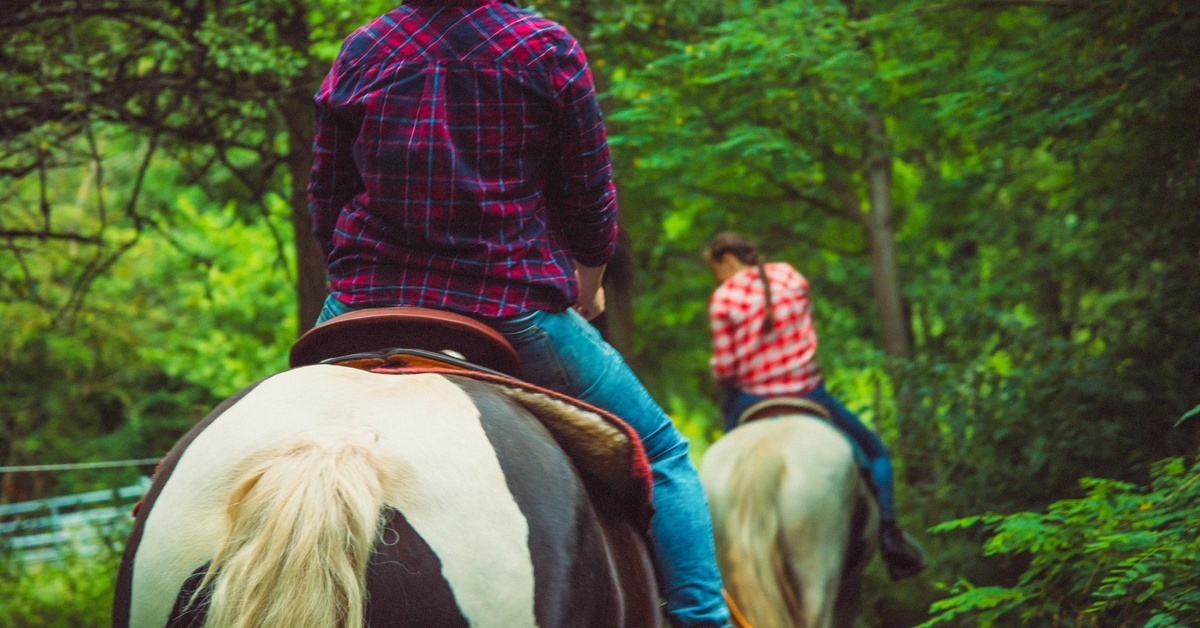The debate around high-rise and low-rise jeans and which works best for riding has been ongoing for years, and for horseback riders, this question takes on an even greater meaning. Riders know better than anyone that the right choice of jeans can make all the difference when spending hours in the saddle.
Whether riding trails, working cattle, or competing in a show, the rise of your jeans affects more than how you look; it also impacts how you feel throughout the day. This guide will tell you everything you need to know about high-rise and low-rise jeans so you can pick the best option when riding.
What Does Rise Mean, Anyway?
Before we get into the details of high-rise and low-rise jeans, it’s essential to understand what “rise” means. The rise of your jeans refers to the distance between the crotch and the top of your waistband. This measurement determines how high or low jeans sit on your waist.
Rise impacts how your jeans fit, feel, and look. Jeans with a higher rise will sit closer to your natural waistline, while those with a lower rise will rest closer to your hips. For riders, choosing the right rise isn’t just about aesthetics; it’s about comfort and functionality.
Understanding High-Rise Jeans
High-rise jeans are defined by a waistband that sits at or above the natural waist. Over the years, this style has made a strong comeback, becoming a popular choice for casual and riding use. When it comes to horseback riding, high-rise jeans have several advantages. Firstly, their higher waistband provides more coverage and support, which is particularly helpful when you’re sitting in a saddle. Also, the back of your jeans won’t slide down when you lean or stretch, a common concern many riders experience with lower rises.
Another benefit of high-rise jeans is their flattering silhouette. By sitting higher on the waist, they make your legs look longer, which many riders appreciate for practical and aesthetic reasons. However, it’s worth noting that high-rise jeans can feel restrictive around the waist, especially if they’re made from less stretchy denim. Riders who prefer more mobility may find this style less accommodating during long, demanding rides.
High-rise jeans work well for riders focusing on disciplines like dressage or Western pleasure, where a polished, tailored appearance matters. They’re also beloved by riders who prioritize coverage and minimal midsection movement due to their secure fit.
Exploring Low-Rise Jeans
Low-rise jeans, on the other hand, typically sit on or below the hips. While they may not offer the same level of coverage as high-rise jeans, they remain a popular choice for riders who value contemporary style and comfort.
The primary appeal of low-rise jeans for riding is the freedom of movement they offer. With less material around the waist, low-rise jeans tend to feel less bulky, which is useful for riders engaged in active disciplines that require agility, such as barrel racing or roping. Their looser fit in the waistband area often means less pressure on the stomach, making low-rise jeans an excellent choice for riders who need to stay comfortable during dynamic movement.
However, low-rise jeans do come with drawbacks. Riders must be cautious of gapping at the back of the waistband when bending or leaning forward, which may lead to discomfort or unintentional exposure. Additionally, some riders find low-rise jeans less secure, particularly during longer riding sessions. That said, if you prioritize flexibility and a modern look over coverage, low-rise jeans can still be a fantastic match, especially for casual riding.
Consider Your Body Type
When choosing between high-rise vs. low-rise jeans for riding, use your body type as your guide. Every rider is built differently, and a style that feels perfect on someone else may not necessarily complement your frame. Foar example, individuals with longer torsos may find high-rise jeans to be an ideal choice as they balance out proportions. Conversely, shorter torsos may benefit from the elongated look that low-rise jeans provide. Personal comfort is the ultimate factor, so trying on styles and experimenting with fits is an excellent way to determine which works best for your body type.
Keep Comfort and Safety in Mind

Comfort and safety are nonnegotiable when selecting your riding jeans. Horseback riding often involves long hours in the saddle, which places pressure on certain areas of your body. Choose a pair of jeans that feels comfortable, even when you’re sitting, bending, or twisting around.
Safety also plays a role. Jeans that are too restrictive or poorly fitted can hinder movement, potentially compromising your ability to shift comfortably with your horse’s gait. When deciding between high-rise and low-rise options, make sure that your jeans allow unrestricted movement without causing stress on your legs or waist.
Don’t Neglect Style
While functionality reigns supreme when choosing riding jeans, your sense of style doesn’t have to take a back seat. Whether you rock high-rise or low-rise jeans, there’s no shortage of designs to suit your tastes. While high-rise jeans often come in classic cuts that pair perfectly with traditional Western detailing, low-rise styles lean toward trendy, casual aesthetics that appeal to riders who favor modern looks. The key is finding a balance between style and practicality. Choose jeans that feel true to your personal aesthetic and meet the functional demands of your riding routine.
Other Factors To Consider for Your Riding Jeans
Though rise is a big decision-making factor, there are other details to keep in mind when choosing riding jeans. For instance, you should consider the cut of the jeans. Bootcut, straight-leg, and flare jeans are just a few examples to consider.
Bootcut jeans offer a traditional, popular fit for riding. The slight flare from the calf down leaves room to fit around your boots without getting in the way as you step in and out of your stirrups. Straight-leg cuts are the same width from hip to ankle, creating a serious look that offers flexibility and comfort throughout.
Flare jeans have a wide flare around the ankles, making them a good match for Western boots. However, these jeans favor form over function, as the excess fabric around your ankles can tangle or rub uncomfortably while you’re riding.
The weight of your denim also matters. Lightweight denim is softer and easier to break in. It’s more comfortable than heavier denim at first, but it also gathers more wear and tear over time. Heavyweight denim, on the other hand, is stiff and sturdy. It takes time to break in, but once you do, it molds to your body and offers a comfortable fit that will last for years.
Find the Perfect Jeans for Your Riding Style

High-rise and low-rise jeans both have unique benefits depending on your riding preferences, body type, and personal tastes. No matter which style you’re looking for, you can find a pair of cowgirl jeans that offers comfort, functionality, and style at Eli’s Western Wear.
 US Dollars
US Dollars

